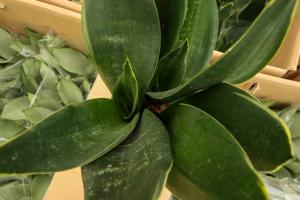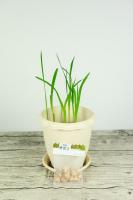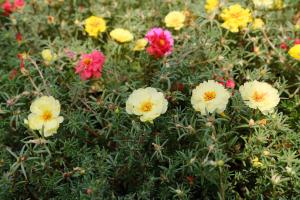Introduction
Plants play a crucial role in the ecosystem as they are responsible for producing oxygen, reducing carbon dioxide levels and providing food for various organisms. One of the essential functions of plants is water absorption, which helps maintain their structure and provide them with necessary nutrients. However, when plants are stepped on, it can cause damage to their structure, and this can affect their ability to transport water effectively. In this article, we will discuss how plants transport water after being stepped on and the impact this has on growth and development.
Plant Structure and Water Transport
To understand how plants transport water, it is important to have a basic understanding of their structure. Plants consist of roots, stems, and leaves, which are all responsible for different functions. The roots of the plant absorb water and nutrients from the soil, which then travel up the stem and reach the leaves, where photosynthesis occurs. The water is then transported to different parts of the plant through a network of tubes called xylem. The xylem is made up of tiny interconnected cells, and the movement of water through them is driven by a process called transpiration. This is where water evaporates from the leaves, creating a vacuum that pulls water from the roots to the leaves.
The Impact of Being Stepped On
When a plant is stepped on, it can cause damage to the stem and leaves, which can affect its ability to absorb water and transport it effectively. The stem is responsible for supporting the plant and transporting water, and damage to this structure can cause it to collapse, making it difficult for water to reach the leaves. The leaves are responsible for photosynthesis, and any damage to them can affect the plant's ability to produce food and vital energy. The damage caused by being stepped on can cause the plant to become dehydrated, wilt and eventually die if the damage is severe enough.
Plant Response to Injury
Plants have evolved several mechanisms to respond to injury and damage caused by various factors, including being stepped on. One of the primary responses is the production of hormones called auxins, which are responsible for promoting cell division and growth. When a plant is injured, this hormone is produced in higher amounts in the region closest to the injury, promoting the growth of new tissue to repair the damage. The plant also increases its water uptake and transport to ensure that the injured area receives enough water to facilitate growth and repair the damaged tissue.
How Plants Transport Water After Being Stepped On
After being stepped on, plants use their inherent ability to transport water to repair the damage caused to their structure. The pressure from the increased water uptake and transport causes the injured plant tissue to swell, promoting the regeneration of new tissue to replace the damaged area. The xylem tubes, which are responsible for water transport, also change to accommodate the damage, stimulating the growth of new tubes to bypass the injured area. This process takes time, but it ensures that the plant is still able to transport water and vital nutrients around its system, despite the injury.
The Importance of Proper Plant Care
Proper plant care, including avoiding stepping on them, is essential to ensure their growth and development. When plants are injured, it takes time to repair the damage, and this can affect their ability to transport water and produce food, leading to stunted growth or even death. However, with proper care and attention, plants can recover and resume normal functions, ensuring their continued growth and survival.
Conclusion
Plants are an essential component of the ecosystem, and their ability to transport water plays a crucial role in their growth and survival. When plants are injured, they have mechanisms in place to repair the damage and continue their functions, including transporting water to different parts of the plant. It is crucial to avoid stepping on plants and to provide them with proper care and attention to ensure their continued growth and development.

 how many times do yo...
how many times do yo... how many planted tre...
how many planted tre... how many pine trees ...
how many pine trees ... how many pecan trees...
how many pecan trees... how many plants comp...
how many plants comp... how many plants can ...
how many plants can ... how many plants and ...
how many plants and ... how many pepper plan...
how many pepper plan...
































